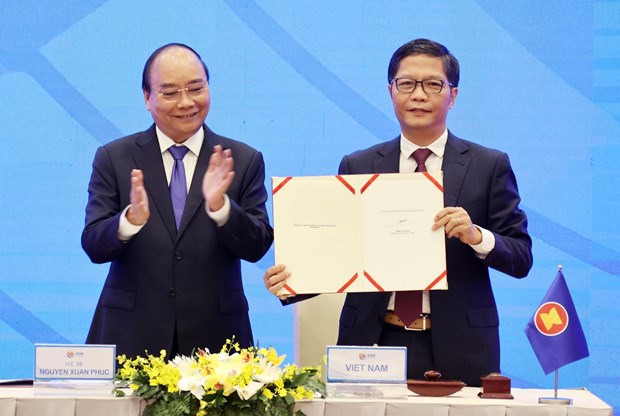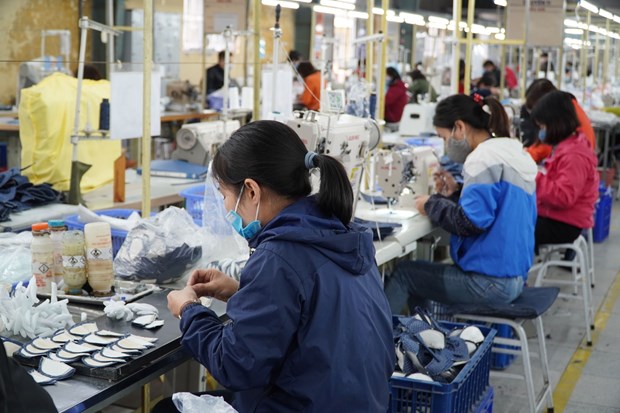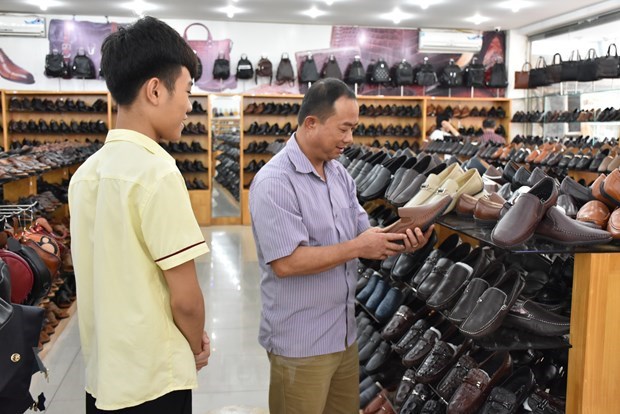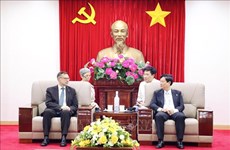RCEP: new impulse for deeper integration into global value chain
 Prime Minister Nguyen Xuan Phuc, ASEAN Chair 2020, and Minister of Industry and Trade Tran Tuan Anh at the signing ceremony of RCEP in November (Photo: VNA)
Prime Minister Nguyen Xuan Phuc, ASEAN Chair 2020, and Minister of Industry and Trade Tran Tuan Anh at the signing ceremony of RCEP in November (Photo: VNA)
Hanoi (VNA) – The signing of the Regional Economic Partnership (RCEP) agreement marked Vietnam’s new step in economic integration, contributing to improving its role and position in the region and the world as well.
Four months after the EU-Vietnam Free Trade Agreement (EVFTA) took effect, Vietnam and other ASEAN member countries officially signed the RCEP agreement with five big partners – Australia, China, Japan, the Republic of Korea (RoK) and New Zealand, on November 15.
ASEAN groups 10 member nations - Brunei, Cambodia, Indonesia, Laos, Malaysia, Myanmar, the Philippines, Singapore, Thailand, and Vietnam.
The signing of the deal whose negotiations lasted for up to eight years has given a new boost to regional trade, especially the signatories, said Deputy Minister of Foreign Affairs Nguyen Quoc Dung.
This is significant to Vietnam in its capacity as ASEAN Chair 2020 that has worked hard to push ahead with the process.
New space for post-COVID-19 economic recovery
The mammoth trade deal is expected create the world’s largest free trade area that covers 30 percent of the world’s population, with a combined GDP of about 26.2 trillion USD or 30 percent of the global GDP.
More importantly, it is set to form new development space for ASEAN member countries to revive after COVID-19.
Under the agreement, Vietnam and its partners will remove tariffs on at least 64 percent of tariff lines.
After 15 to 20 years, Vietnam will remove 89.6 percent of tariff lines for partner countries which, in return, will eliminate up to 92 percent of tariff lines for Vietnam. Other ASEAN members will cut 85.9 percent of all tariffs for Vietnam.
Telecommunications, information technology, machinery, spare parts, chemicals, and agricultural products will immediately benefit from the deal.
Nguyen Thi Thu Trang, Director of the Centre for WTO and Integration of the Vietnam Chamber of Commerce and Industry, said the agreement will facilitate Vietnamese exports to the 14 remaining member markets.
Vietnam imports materials from Japan and the RoK to manufacture electronics and from China and the RoK to produce garments and textiles. RCEP will provide the most tax incentives for Vietnamese exports, according to the official.
This is the biggest difference between RCEP and other trade deals Vietnam has signed, she went on.
“RCEP’s main benefits relate to the harmonisation of rules of origin and tariffs. To make the most of the deal, businesses must study the rules of origin. The deal will create stronger competition in the domestic market and in the RCEP market. For example, China and Japan haven’t signed an FTA yet, but through RCEP they will enjoy free trade, so our competition in the Japanese market will increase. Our direct competitors will include China, so Vietnamese businesses must increase their competitiveness in order to prosper,” she said.
RCEP will pressure Vietnamese exporters to compete with other Southeast Asian exporters, some of whom are strong in similar product categories, but it will create opportunities for Vietnam businesses to improve their competitiveness, products, and supply chains.
To that end, domestic businesses need to invest more in technology and management skills, Trang suggested.
Nguyen Thi Quynh Nga, Deputy Director of the Multilateral Trade Policy Department of the Ministry of Industry and Trade (MoIT), said, “What makes RCEP different from other free trade agreements is that it integrates pre-existing bilateral agreements between ASEAN and five of its major trade partners with regard to rules of origin.”
“That means Vietnamese firms can use input materials from any RCEP country, including the 10 ASEAN countries and five partner countries, to produce goods and export them to any RCEP nation and enjoy preferential tariffs for meeting the rules of origin,” she said.
Establishing new supply chain
According to the Ministry of Industry and Trade, Vietnam already participated in ASEAN Trade in Goods Agreement (ATIGA) and free trade agreements (FTAs) between ASEAN and other partner countries, meaning that trade liberalisation had already been implemented over the past two decades.
RCEP was basically an agreement which unified pre-existing bilateral agreements between ASEAN and five of its major trade partners, which would not create any shocks on tariff liberalisation to Vietnam, the ministry said, adding that RCEP mainly aimed to create favourable conditions for business operation and investment.
 RCEP will open up more market opportunities for businesses. (Photo: VNA)
RCEP will open up more market opportunities for businesses. (Photo: VNA)
The trade deficit was not the only factor to consider about an FTA, the ministry said. More importantly, FTAs would help enhance cooperation between economies, attract foreign investment and bring other values to the economy and citizens.
Looking at the time when Vietnam joined the World Trade Organisation, the country ran a considerable trade deficit but this was an opportunity to improve the competitiveness of the economy and enterprises.
Minister Tran Tuan Anh said, unlike other FTAs Vietnam had signed, RCEP targets ASEAN’s centrality, particularly creating a framework to facilitate trade and space to connect production in the bloc.
A World Bank study in 2018 predicted that the RCEP implementation could increase Vietnam’s GDP by 0.4 percent by 2030.
Experts suggested businesses carefully study commitments, especially those regarding tax reduction, rules of product origin, market opening in services and tourism, and regulations on customs procedures and trade facilitation, in order to bring into full play the agreement.
In addition, domestic firms should brace for adverse impacts, notably fiercer competition right in the local market, they said.
Tran Xuan Tien, Chief of Team Attorney's Office, said RCEP and other FTAs will bring about opportunities for businesses that adapt to changes in the business climate due to international economic integration.
Enterprises need to set up cooperation with partner markets of RCEP to attract more investments in Vietnam, effectively optimising capital and technological transfer from major groups, he said.
This would be a good opportunity for Vietnamese firms to integrate deeper in the regional and global supply chains, Tien noted./.
 RCEP will enable businesses to integrate deeper into the supply chains. (Photo: VNA)
RCEP will enable businesses to integrate deeper into the supply chains. (Photo: VNA)











